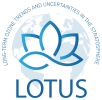
Mission statement
More than twenty years after the peak of ozone depleting substances in the stratosphere, a clear understanding of ozone trends and their significance as a function of altitude and latitude is needed. The LOTUS activity aims at providing a clear evaluation of uncertainties in trend studies and in particular the consideration of errors linked to e.g. the sampling and the stability of long-term ground-based and merged satellite data sets. It aims also at assessing the coherence of ozone profile trends with total ozone trends.
Long-term Ozone Trends and Uncertainties in the Stratosphere (LOTUS) was initiated in 2016 and has contributed to the 2018 & 2022 WMO/UNEP Ozone Assessments. LOTUS is currently entering its third phase (2022-2026) and aims at
- improving existing and/or investigating / developing new analysis techniques to better quantify trends and improve confidence of trend results;
- deriving ozone trends from observations in partial columns, in collaboration with both TOAR-II and OCTAV-UTLS, to explore, at a minimum, the separate contributions of the stratospheric and tropospheric columns to the total column;
- focusing on trends in the UTLS region, specifically by supporting OCTAV-UTLS, which is investigating dynamical coordinate systems, in an effort to improve both trend uncertainties and our understanding of physical causes of long-term changes;
- assessing the consistency between satellite and ground-based records;
- applying newer analysis techniques and our improved understanding thereof to derive trends in the polar regions;
- investigating the connections between ozone and temperature trends in close collaboration with ATC as well as potentially other connections such as water vapor trends.
